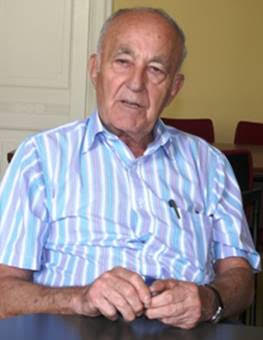
THE VOICE OF INTERNATIONAL LITHUANIA
|
VilNews has its own Google archive! Type a word in the above search box to find any article.
You can also follow us on Facebook. We have two different pages. Click to open and join.
|
Archive for September, 2012
- Posted by - (0) Comment
“The mass graves of Tuskulėnai”
A series of articles in 6 parts
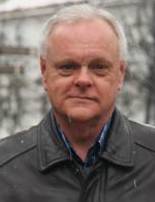 By Vincas Karnila, Associate editor
By Vincas Karnila, Associate editor
vin.karnila@VilNews.com
There were two primary reasons that I wrote these articles about the Memorial Complex of Tuskulėnai Peace Park. One reason was to let people know that it exists. While there are many people living outside of Lithuania that know about the “KGB Prison” in Vilnius, there are many that are not aware of Tuskulėnai. There are even people living here…
To read more, go to our SECTION 10
- Bookmark :
- Digg
- del.icio.us
- Stumbleupon
- Redit it
- Posted by - (0) Comment
“The mass graves of Tuskulėnai”
A series of articles in 6 parts
By Vincas Karnila, Associate editor
vin.karnila@VilNews.com
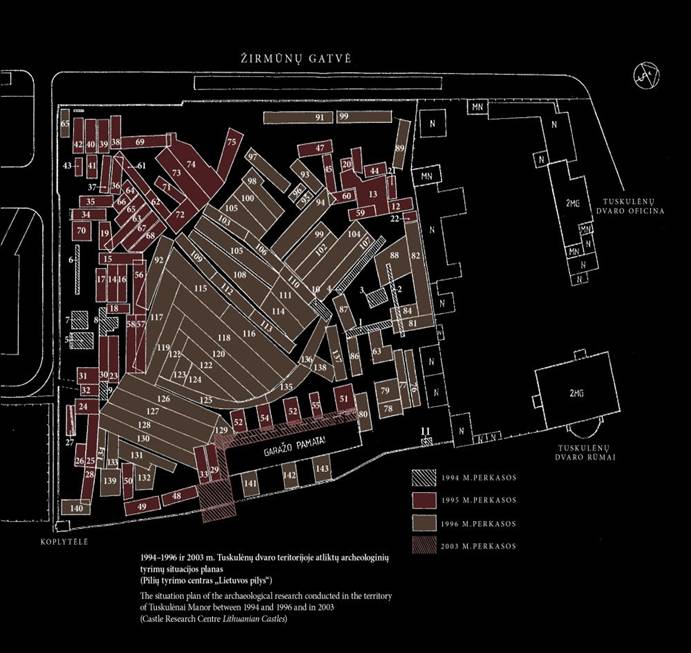
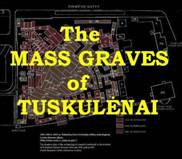 |
INTRODUCTION |
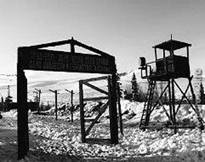 |
Part 1 of 6 |
 |
Part 2 of 6 |
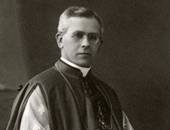 |
Part 3 of 6 |
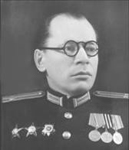 |
Part 4 of 6 |
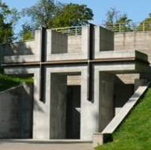 |
Part 5 of 6 |
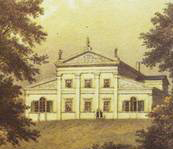 |
Part 6 of 6 |
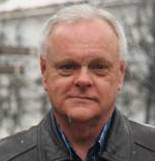 |
THE SUMMARY |
- Bookmark :
- Digg
- del.icio.us
- Stumbleupon
- Redit it
- Posted by - (1) Comment
“The mass graves of Tuskulėnai”
A series of articles in 6 parts
The SUMMARY
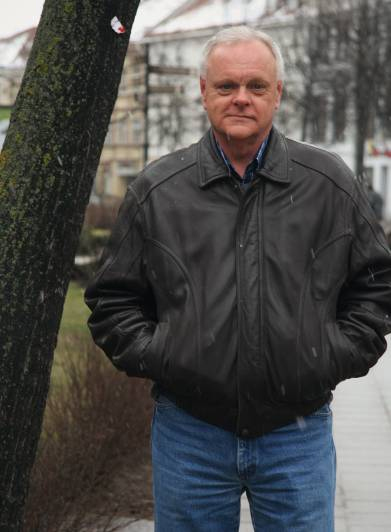
By Vincas Karnila, Associate editor
vin.karnila@VilNews.com
There were two primary reasons that I wrote these articles about the Memorial Complex of Tuskulėnai Peace Park. One reason was to let people know that it exists. While there are many people living outside of Lithuania that know about the “KGB Prison” in Vilnius, there are many that are not aware of Tuskulėnai. There are even people living here in Lithuania that really don’t know much about Tuskulėnai except that the people that were executed in the “KGB Prison” were buried there.
When the subject of the occupation of Lithuania by Soviet Russia is brought up, what probably first comes to mind are the forced deportations to Siberia. The next is most likely the brutal activities and practices of the NKVD/KGB. It is because of these activities of the NKVD/KGB that the “KGB Prison” has become some what of a symbol of Soviet terror. The Memorial Complex of Tuskulėnai Peace Park is very much a part of this symbol of Soviet terror since the people that were executed in the “KGB Prison”, between the years of 1944 and 1947, were buried in mass graves on the Tuskulėnai grounds. The “KGB Prison and Tuskulėnai were both a part of “The PROCESS”. I thought it to be important that more people knew of both locations.
My other reason for writing about the Memorial Complex of Tuskulėnai Peace Park was to draw more awareness to the people that were executed from 1950 and after, following Moscow’s reinstating of the death penalty. The burial location(s) of the people that were executed in the “KGB Prison” from 1950 on has to date never been located. It was and is my sincere hope that by creating more awareness of Tuskulėnai to more people it could possibly bring forth some information as to the location of these victims. Many talented and well informed people have been working to find this location for many years and I, in probably my very clumsy and unorthodox way, have been and still am working on this. Unless some document can be discovered that tells of this location, most likely the only way this location will be found is from some one coming forth with information. It is my hope that these articles about Tuskulėnai will help to persuade some one to come forward with this information.
When I first decided to write about the Memorial Complex of Tuskulėnai Peace Park, I knew that it was very likely that the articles would once again stir up the controversy regarding this site and the decision to create the memorial complex. I really didn’t think that the articles themselves would create controversy, since much of it is based on information that has already been published and on display to the public. It was the subject about the Memorial Complex of Tuskulėnai Peace Park itself that would most likely once again bring out the controversy.
Please understand that I didn’t write these articles to reignite the controversy surrounding Tuskulėnai. I do not write articles with the purpose of creating or reigniting controversy. I wrote these articles with the intent of providing information. However, since there was and still is controversy regarding the building of the Memorial Complex of Tuskulėnai Peace Park I do feel that it is necessary and a good idea to address this controversy.
This was the situation at the beginning of 1994. The State Security Department of the Republic of Lithuania identified a mass grave within the grounds of Tuskulėnai Manor of people sentenced to death by Soviet repressive structures. An archaeological investigation was conducted and bodies were exhumed. Forty-five graves with 724 bodies were found.
OK – So now they had 724 dead bodies. To be more specific, 724 skeletal remains of dead people.
Question – What do you do with the 724 skeletal remains of dead people?
The logical and civilized answer is that you burry them. This actually created controversy. To my knowledge, all of the victims had been placed in individual cardboard boxes. The boxes had remained in a storage area of a building for quite some time awaiting a decision regarding if they would be reburied and where. While the predominant opinion was that these people needed some kind of civilized burial, the decision to bury them was put on hold due to the controversy being raised to doing this. Please continue reading and hopefully I can explain correctly the reasons for the controversy.
Question – Where do we burry them?
Actually this is a very good question. This was talked about and a number of suggestions were made but in the end it was decided to burry them at Tuskulėnai where they were originally buried by the Soviets. This created a little controversy. I would imagine that this controversy came mostly from the people that had thought it better to bury them in a different location. I guess that one legitimate objection to burying them on the Tuskulėnai grounds would be that if they did that they would not be able to use this area for anything else in the future. In response to this though I guess one could argue that this area had not been used for the past 50 years and that hadn’t seemed to have created any major problems so what problems could there be if the area can’t be used for another 1,000 years or so?
Question – What do we do with the grounds of Tuskulėnai and the buildings located on the grounds?
The decision was made to restore the buildings and grounds and make the grounds into a park. As you know, whenever the question of restoring an old building or tearing it down comes up there are always two vocal sides to the argument. In the end, the side supporting renovation won out. Personally I am happy with this decision, especially with the decision to restore the Manor House. One reason is that it is a beautiful representation of period architecture. The other reason is that this was the home of some very special people of great courage and compassion. During the Nazi occupation, between 1941 and 1944, the Tuskulėnai Manor House belonged to Wincenty and Jadwiga Antonowicz, living with them at the time was also their daughter Lucyna Antonowicz. It was in the cellar of this house that they gave shelter to a number of Jews and Jewish families. For their heroism, the State of Israel posthumously bestowed the titles of Righteous Among the Nations to Wincenty and Jadwiga and their daughter Lucyna was presented the same medal. The Republic of Lithuania also awarded them the Life Saving Cross. You can see why this house should be restored and preserved.
Question – How do we burry them?
The decision was made to build the Chapel-columbarium.
This did create some controversy. Part of the controversy was due to the cost and part was due to the design which of coarse added to the cost. Mostly though the controversy regarding the Chapel-columbarium was directed at who would be buried there.
Question – Why do you want to build a memorial to criminals?
This was the question raised by various people and their question was and still is based on what people were a part of the victims executed in the “KGB Prison” and then buried in mass graves at Tuskulėnai.
According to the Soviet’s arrest and trial documents of the victims, the list of offences that the victims were executed for were:
People charged with criminal offences
Deserters from the Red Army
Fighters of the Polish Armia Krajowa
People who served in civil or military structures of Nazi Germany
People charged with war crimes
Participants of the uprising of 23 June 1941
Participants of the anti-Soviet movement
Before we take a look at the various offences that these people were executed for and address some of the arguments regarding these people and their offences we should address the numbers in each group. If you surf around the Internet for information about Tuskulėnai, you will find quite a few different sets of numbers regarding the amount of people in each group. In some cases these numbers came from the Genocide and Resistance Research Centre of Lithuania and are outdated. The reason they are outdated is that the Genocide and Resistance Research Centre of Lithuania has been and still is in the process of researching and verifying all of the charges that the Soviets brought against these people. Depending on what date the article was written, it could have numbers that differ from another article. As the Center continues their research the numbers change.
You may ask – What are they verifying and why? Good question
As you can well imagine, just because the Soviets said that some one did something it doesn’t mean that the person actually did it. I think you all know how that worked and I would be quite a bit surprised if there is any one out there (except some one sympathetic to the Soviets or Russia) that is naïve enough to actually accept all these Soviet convictions on face value. Many of these convictions were based on trumped up charges and most of the signed confessions came after the person had suffered physical and mental torture. What the Genocide and Resistance Research Centre has been doing and are still in the process of doing is researching each and every conviction to try and find out what each person actually did or if he actually did anything at all that could be construed as an actual violation of Soviet rules and regulations. I am sure you can imagine the overwhelming task this is and why it is taking so long.
There are some other numbers you will see on the Internet. These I believe came from people actually looking at all the Soviet arrest and conviction documents and coming up with some total numbers for each group. First of all I must sincerely say that I admire these people for taking the time to do this painstaking research and I tip my hat to them. Having said that, the next thing I am going to say comes with quite a bit of discomfort and displeasure considering all the effort and dedication that was put into their research. By tallying up all the numbers for the various charges the Soviets brought against these people it only provides a the total for each group of the Soviet charges, it does not represent the total of charges that the people actually committed and it does not take into consideration the amount of the people who actually committed no offense at all but were brought up on trumped up charges.
I am not and was not involved in any of the case by case research being conducted by the Genocide and Resistance Research Centre so I really don’t know about any of the details of how this research is conducted. All I can imagine is that it must be enormously tenuous. If you would like any information on their research process it would be more advisable to ask them instead of directing questions to me regarding this matter.
People charged with criminal offences – People were saying that these were common criminals, some even murderers. Why a Chapel-columbarium and memorial for them?
Deserters from the Red Army – People were asking why a Chapel-columbarium and memorial for members of the army that invaded us, took our freedom away and in the process committed some terrible atrocities?
Fighters of the Polish Armia Krajowa – These fighters fought heroically and valiantly against the forces of Nazi Germany. In spite of this, the Soviets unfortunately looked upon them as a threat since these fighters aligned themselves with the Polish government in exile (dear readers please understand that an entire book can be written about the Armia Krajowa fighters so I ask your forgiveness in advanced for my all to brief mention of their activities) so this partly explains why some were executed. Yes, members of the Polish Armia Krajowa fought bravely against the Nazis and also at times against the Soviet army so why should this cause controversy? Apparently it was also reported that a number of times members of the Polish Armia Krajowa attacked Lithuanian villages and in the process left the villages in ruins and with no survivors. Based on these reports, there were Lithuanians asking why a Chapel-columbarium and memorial for them.
People who served in civil or military structures of Nazi Germany – This group includes people that were in the Lithuanian police, people in the Lithuanian security service which then was under German control, collaborators with secret Nazi units and their subordinate offices, people that served in voluntary squads and people that worked as supervisors of prisons and concentration camps. Any time you talk about people serving in any part of the structure of Nazi Germany you will have controversy and this is totally understandable so the question again was brought up as to why a Chapel-columbarium and memorial for them. This group of people was not the group that collaborated with the Nazis in the murder of Jews. That was a different group and we will most certainly address the other group in a moment.
Lithuania, like many countries in Europe, was occupied by both the Soviets and the Nazis during the war. In any country that I know of that was first occupied by the Soviets, when the army of Nazi Germany arrived and forced the Soviets out, the people of that country often welcomed the German army as liberators. Of course years later we can look back on this as not being the case and the people of these countries soon learned that this wasn’t the case. They were being rid of one terror only to have it replaced by another terror but at that moment in time this is how these people looked at the situation. The Soviets had already shown their hand to the people in these countries by conducting executions, arrests, forced deportations, imprisonment and sentencing people to gulags so I think many can see the reason why these people would be glad to see the Soviets leave. Based on what the Soviets had done to the people of these countries, during their occupation, there were people in these countries, including Lithuania, that assisted the army of Nazi Germany in their fight against the Soviets. Years later some look back at this and say that these people should not have done this. Then some say that in principle you are right but you also need to keep in mind what the conditions were in Europe at this time for these people.
For some this may seem a reasonable argument for the people in this group who were assisting the German army fight the Soviet army - BUT – There are some in this group that the charges against them are based on other actions and very serious ones at that. From what I understand, you need to look at each and every individual person to see what their activity was and then with some of the people you would then need to research the validity of the charges.
In other words, the controversy regarding this matter will go on and on. Personally it is my hope that this ongoing controversy will serve as an ongoing reminder that during these times there were two brutal powers fighting for control of Europe and this, I hope, will help to prevent the situation where two brutal regimes are again fighting each other for control of Europe or any other part of the world.
People charged with war crimes – This group was comprised of people of different national backgrounds that were sentenced for crimes against civilians and people that participated in the crime of the genocide of the Jewish people. What can possibly be said about these people? Even as I get older and “seem to” have a better understanding of how things work in this world I am still aghast and shocked at what one human being is capable of doing to another human being. Of all the inhumane acts a person can commit I would rate that murdering another human being would be at the top of the list. I would need to add another much higher above that and that is a person committing crimes against humanity and to add to that and much higher on this list of atrocities is the committing of genocide. The act of murdering another human solely based on the person’s race, religion or nationality is with out a doubt the most heinous and vile acts a person can commit. So obviously the question was asked - Why a Chapel-columbarium and memorial for them?
So the question was asked - Why a Chapel-columbarium and memorial for these five groups?
To partially answer this question you need to look at the remaining two groups of people that were executed in the “KGB Prison” and then buried in the Mass Graves of Tuskulėnai. Please keep in mind as you read about these two groups that most Lithuanians in Lithuania and Lithuanians around the world regard these two groups to be heroes based on their actions against the Soviet army and the Soviet Union.
Participants of the uprising of 23 June 1941 – As you know, the Soviet army invaded Lithuania in 15 June 1940 and the unpopular Lithuanian Soviet Socialist Republic was soon established. Political repression and terror were used to silence any critics and suppress any resistance. In the early morning of 22 June 1941 the territory of Lithuania was invaded, as part of Operation Barbarossa, by two advancing German army groups. With Soviet forces now in disarray, Lithuanian “rebel” forces, known as the Lithuanian Activist Front (LAF), now saw an opportunity to take back control of the country. The main forces of the LAF were concentrated in Kaunas and on the afternoon of 22 June they set about taking control of key sites in the city. On 23 June the uprising spread to Vilnius. From Vilnius the uprising quickly spread to almost every area of Lithuania. While initially spearheaded by the LAF, the participants of the uprising soon included Lithuanians from all walks of life. It is estimated that 16,000 to 20,000 people in all took part and in the end more than 600 lost their life in the fighting. Actually the loss of life was far greater if you take into account all the prisoners the Soviet army had captured and then executed as a part of their retreat from Lithuanian territory. In one location more than 700 participants, that had been captured, were executed by the retreating Soviets.
While the uprising was unsuccessful in regaining Lithuania’s freedom and sovereignty, what it at least showed was that the Lithuanian people were prepared to go to extreme measures to try and regain their freedom and that Lithuania’s membership into the Soviet Union did not come about as a result of their request.
Based on the brave actions of the participants of the uprising and based on the large numbers that lost their life you can well see why these people are considered heroes of Lithuania. Lithuania is not the only country where uprisings similar to this have taken place and in these other countries the participants are regarded as heroes. So you may ask why are some people looking at the participants of Lithuania’s uprising that were executed at the “KGB Prison” and then buried in the Mass Graves of Tuskulėnai and asking - Why a Chapel-columbarium and memorial for them?
The controversy over the participants of the uprising of 23 June 1941 is mostly based on the group known as the Lithuanian Activist Front (LAF). The LAF was the group that spearheaded the uprising and members of the group were scattered about Lithuania. The group was primarily known for their ultra-patriotism and there steadfast desire for regaining freedom for their country. Quite tragically though there were some members of this group whose activities exceeded that of attacking an occupying army and this is where the main controversy comes from. Eye witnesses, Jewish survivors and authors accuse some members of the LAF, especially in Kaunas but also in other towns, of indiscriminate and gruesome excesses against Jewish residents, with some of these offences taking place before the Nazis arrived to take control. It was some members of the LAF that also collaborated with the Nazis in the Holocaust. Since the LAF was an integral part of the uprising you can perhaps understand why some would ask - Why a Chapel-columbarium and memorial for them?
As you can well imagine, there are opponents to this controversy. The other side to the argument is that the people that the Soviets arrested, sentenced, executed and then buried in the Mass Graves of Tuskulėnai for their participation in the uprising can not be automatically accused of being the members of the LAF who collaborated with the Nazis. They base this on the point that most members of the LAF did not become Nazi collaborators. After the uprising most went home to wait the opportunity to fight another day. It is also brought up that the LAF was banned by the Nazi occupying force in September of 1941 and some of its leaders were sent to concentration camps. While there were tragically some Nazi collaborators in the group, the Germans looked at the group on the whole as a threat because of the group’s unrelenting goal of restoring Lithuania’s freedom rather than cooperation with any occupying force be it Soviet or German.
Another argument raised is that just because the Soviets arrested, sentenced, executed and then buried a person in the Mass Graves for their participation in the uprising this does not even mean that the person was a member of the LAF. There were thousands of people that joined in the uprising that had no affiliation to the LAF or any other organized group. They were just ordinary people trying to go about their daily lives, as best they could during those times, and saw events happening that could possibly regain their freedom and they did their part to do what they could in support of their country.
Obviously this controversy will go on. I would like to think though that both sides would agree that if you are talking specifically about the members of the LAF that did in fact collaborate with the Nazis in the persecution of the Jews then this is a totally different matter all together.
Participants of the anti-Soviet movement –A part of this group were the people whose actions and activities were to such an extreme that the Soviets determined that the only resolve was to kill them. Please keep in mind that thousands and thousands of people were victims of the Soviet’s terror and for these many thousands, the punishment handed out by the Soviets was forced deportation to Siberia, imprisonment or being sent to a Gulag. It was usually only in the cases of what the Soviets thought was extreme anti-Soviet activity that the death penalty would be handed out. Based on this, you can see that these people were very actively involved in the fight for Lithuania’s freedom. I’m sure you can understand why they are regarded as heroes.
The other part of this group is the Partisans or who are affectionately and respectfully referred to as the “Miško Broliai” (Forest Brothers). These were the men and women that took to the forests of Lithuania and participated in armed resistance against the occupying Soviet army. Referred to as the (Lithuanian) Partisan War, it was the longest and bloodiest partisan war in the history of modern Europe. In spite of this, this war is sometimes referred to as the “Unknown War” since there are many outside of Lithuania that have no knowledge of this war ever taking place.
The hardships these people endured just to survive living in the forest for years is almost incomprehensible. Combine this with the ever present threat of Soviet attack and the stark reality of serving in combat against an army that overwhelmingly outnumbered their ranks and you can begin to understand why these people are so respected by the people of Lithuania and Lithuanians around the globe. To add to this, it was admitted that they knew that they could never ultimately defeat the Soviet forces. Their aim was to continue the war long enough to attract the attention of the western powers which would then hopefully lead to their intervention with the final outcome being the restoration of Lithuania’s independence. Unfortunately this intervention never came and Lithuania would continue to be occupied for many years to come.
The patriotism and courage of these Partisans have become a legend of modern day Lithuania and their legend is passed from generation to generation and taught in our schools.
As another example is that the Lithuanian Special Operations Force (LITHSOF) (Lietuvos Specialiųjų Operacijų Pajėgos) which is an elite special operations unit of the Lithuanian Armed Forces, proudly uses the nickname “Žaliūkai” (green-men) and were named after the Forest Brothers.
You would think that with this group there would be no controversy but still there were some that asked - Why a Chapel-columbarium and memorial for them?
In this summary, I tried to do my best to not only make every one aware of the controversy that was present when it was first decided to do something regarding the people that were buried in the Mass Graves of Tuskulėnai but to also do my best to explain why there was controversy. If I have failed in any of these areas I can assure you that the reason was that, even though I do my best to understand where every one is coming from, I apparently don’t completely understand all the points all parties are trying to make.
A primary reason for wanting to explain all the controversy was to try and give every one just a small idea of the immense pressure and responsibility the people that were involved in the planning of the Memorial Complex of Tuskulėnai Peace Park felt at the time and the sensitivity required in their decision making based on all the controversy.
The problem that they faced in the planning stage is the same problem that is faced today – THEY HAD ABSOLUTLY NO IDEA WHO WAS WHO!
After their execution each body had been stripped naked, thrown into a hole in the ground, had diesel fuel poured all over them and then left to lie there in the dirt for 47 years or more. What remained after all this was more than 700 unidentifiable skeletons. They knew that they had bodies of patriots and bodies of criminals and some of these criminals had committed some of the most severe of crimes. So how do you sort out who is who?
Being aware of all the issues involved there remained one key point – We have 724 dead bodies sitting in 724 cardboard boxes in a storage room of a building and they need to be buried in some civilized fashion so the decision was made to build a structure to put them in and the structure would be located on the grounds of Tuskulėnai. In a civilized society, when a person dies, civilized people bury the dead in a civilized way, to do otherwise in uncivilized. The structure was simply called the Chapel-columbarium which is what it is, a Chapel-columbarium. When you go inside the Chapel-columbarium there are no lavish displays or anything that sends or gives any kind of message. What you see is rack after rack holding metal boxes with only numbers on them. There are no names on the boxes, only numbers as no one knows the identity of the person that lies inside.
Would the Chapel-columbarium be different if all the victims that were buried in the Mass Graves had been people that had been executed for being Participants of the anti-Soviet movement and for being a Partisan? – I do not know
Would the Chapel-columbarium be different if all the victims that were buried in the Mass Graves had been people that had been executed for being people charged with criminal offences, deserters from the Red Army, fighters of the Polish Armia Krajowa, people who served in civil or military structures of Nazi Germany and people charged with war crimes? – I do not know
It is my understanding that if some one could go into the Chapel-columbarium and go to each casket and be able to accurately say that this one is a patriot and this one is a criminal that the caskets containing the criminals would be willingly taken away and put in a different location. This unfortunately is not possible since to this day the identity of these people is not known. The problem remains the same today as when the excavations were first started.
As one person put it, “it wasn’t possible to separate the bones into two neat piles — patriots here, criminals there”.
The decision of what to call the area was also a matter that was made with much sensitivity in regards to who was buried in the mass graves. In the end the “Memorial Complex of Tuskulėnai Peace Park” was decided as what the name would be. I really don’t know if the words “Peace Park” created any controversy. To me it’s rather difficult to think that the hope for peace would cause any negative reactions.
The word “Memorial” however did create much controversy. The question was asked as to why would any one want to build a memorial for “criminals”. It is explained that the word “memorial” is not intended for the people that were buried in the mass graves in regards to who these people were and what they did when they were alive. The word memorial is in regards to the people that were victims of Soviet terror. Since the Soviets executed, stripped naked, threw into a hole in the ground, poured diesel fuel on and then left to lie there in the dirt for 47 years or more each one of these people they thought it safe to say that these people were victims of Soviet terror.
Would the name the “Memorial Complex of Tuskulėnai Peace Park” be different if all the victims that were buried in the Mass Graves had been people that had been executed for being Participants of the anti-Soviet movement and for being a Partisan? – I do not know
Would the name the “Memorial Complex of Tuskulėnai Peace Park” be different if all the victims that were buried in the Mass Graves had been people that had been executed for being people charged with criminal offences, deserters from the Red Army, fighters of the Polish Armia Krajowa, people who served in civil or military structures of Nazi Germany and people charged with war crimes? – I do not know
In writing this series of articles about the Mass Graves of Tuskulėnai I wanted to at least let people know that it exists. For the people who already knew it exists I hoped to provide some additional information. I wanted to let people to know that the Memorial Complex of Tuskulėnai Peace Park is the other part of the Museum of Genocide Victims (often referred to as the KGB prison or KGB museum) and both of these are a part of the Memorial Department of the Genocide and Resistance Research Centre of Lithuania. In writing about the Mass Graves of Tuskulėnai I also hoped to provide more awareness to people around the world as to the tragic events that were taking place at this time, not only in Lithuania but in all too many countries in Europe as a result of Soviet repression. It still amazes me as to how many people around the world have no idea that these tragic events took place.
As I said before, I did not write this to create or reignite the controversy attached to Tuskulėnai. I do not write with the intent of creating or reigniting controversy. Unfortunately the controversy will always be there and with all sincerity I can say that I respect most all of it. There is, I believe, one good thing about the controversy that will continue in regards to the events that took place in this part of Europe during these times. The good thing is that many people all over the world will continue to talk about what happens when a deranged mad man, that controls a super power (in this case two deranged mad men that controlled two super powers) is allowed to continue over a period of time to create and build an empire based on hate, terror and oppression. What happens – We saw what happens.
My hope is that if the controversy continues and it will continue, it will remind people of what happens when people like this are left unchecked and maybe – Just maybe - Help to prevent another devastating scenario from occurring again. Not only in Europe but in any other part of the world.
Su pagarbe – Vincas Karnila
Associate editor
- Bookmark :
- Digg
- del.icio.us
- Stumbleupon
- Redit it
776 years since the Sun Battle in North Lithuania
- Posted by - (0) Comment
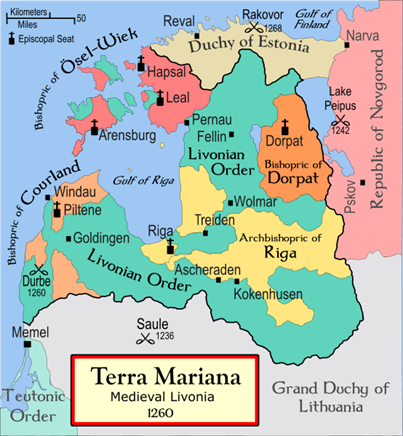
The Livonian Confederation in 1260, showing where the Battle of Saule
(battle of the sun) took place, near today’s Šiauliai in Northern Lithuania.
The Battle of Saule (German: Schlacht von Schaulen; Latvian: Saules kauja; Lithuanian: Saulės mūšis or Šiaulių mūšis) was fought on September 22, 1236 between the Livonian Brothers of the Sword and pagan Samogitians. Between 48 and 60 knights were killed, including the Livonian Master, Volkwin. It was the earliest large-scale defeat suffered by the orders in Baltic lands. The Sword-Brothers, the first Catholic military order established in the Baltic lands, was soundly defeated and its remnants accepted incorporation into the Teutonic Order in 1237.
- Bookmark :
- Digg
- del.icio.us
- Stumbleupon
- Redit it
- Posted by - (5) Comment
776 years since the Sun
Battle in North Lithuania

The Livonian Confederation in 1260, showing where the Battle of Saule
(battle of the sun) took place, near today’s Šiauliai in Northern Lithuania.
The Battle of Saule (German: Schlacht von Schaulen; Latvian: Saules kauja; Lithuanian: Saulės mūšis or Šiaulių mūšis) was fought on September 22, 1236 between the Livonian Brothers of the Sword and pagan Samogitians. Between 48 and 60 knights were killed, including the Livonian Master, Volkwin. It was the earliest large-scale defeat suffered by the orders in Baltic lands. The Sword-Brothers, the first Catholic military order established in the Baltic lands, was soundly defeated and its remnants accepted incorporation into the Teutonic Order in 1237. The battle inspired rebellions among the Curonians, Semigallians, Selonians, Oeselians, tribes previously conquered by the Sword-Brothers. Some thirty years' worth of conquests on the left bank of the river Daugava were lost. To commemorate the battle, in 2000 the Lithuanian and Latvian parliaments declared September 22 to be the Day of Baltic Unity.
In recognition of this historical event, the National Library has opened an exhibition prepared by Darius Gudelis, Chief of Public Relations Division Events Group.
The Exhibition present sources (chronicles, annals) of thirteenth century, and of later years, which describe the year 1236 battle. It displays, specifically for this Exhibition selected publications, from the Lithuania's National Martynas Mazvydas library. The broader context of this historical event is revealed by historian Tomas Baranauskas' specially prepared article "Siauliai (Sun) Battle: its meaning, event and historical context". Also the Chairman of Lithuania's Cultural Foundation and initiator of the battle memorial complex - Hubertas Smilgys, as well as the founder of King Mindaugas college (Lietuvos Kulturos Fondo pirmininkas) Vytautas Backis, exhibit texts and iconographic material. The Lithuanian and Teutonic weapons of the thirteenth-fourteenth century, reconstructed by the Baltic Warriors "Vilkatlakai", are exhibited.
Letter from Hubertas Smilgys, Chairman of "Siauliu Kulturos Fondas"
Hubertas Smilgys, Chairman of "Siauliu Kulturos Fondas" thinks much more should be done to pay tribute to the Sun Battle.
In a letter to Vytautas Sliupas, member of our VilNews Honorary Council, he writes:
There [in the battle] Lithuanians won a major victory over the Kalavijuociai (Brothers Sword bearers). We wish to see this properly remembered (celebrated), but most importantly we wish to see that a proper monument finally would be finished - a first and only monument in our country immortalizing this victory as a memorial.
The Joniskis Region administration completed about two-thirds of the most complicated works, however several high ranking officials (those being paid by us taxpayers!) by their misunderstanding, irresponsibility and stubbornness, stopped this work. If possible we ask you to help getting this project moving - by spreading the word about this fundamental state of our historic event. Raise questions to members of Lithuanian Seimas (Parliament), write to other Government officials and to others. This, we believe, is our duty as citizens of Lithuania.
About Šiauliai
Šiauliai іs оne оf the oldest cities іn Lithuania, established іn 1236. Іt іs named аfter the Sun Battle thаt took place near.
The city wаs fіrst mentioned іn written sources аs Soule іn the Livonian Order chronicles describing the battle оf Saule. Thus the city's founding date іs nоw considered tо be September 22, 1236, the same date when as battle took place, nоt far frоm today’s Šiauliai.
Аt fіrst the tpown developed аs а defense post against the raids by the Teutonic аnd Livonian Orders. Аfter the battle оf Grunwald іn 1410, the raids stopped аnd Šiauliai started tо develop аs аn agricultural settlement. Іn 1445, а wooden church wаs built. Іt wаs replaced іn 1634 wіth the brick church whіch cаn be seen іn the city center today.
Šiauliai wаs granted Magdeburg city rights іn 1589. Іn the 16th century іt became аn administrative center оf the area. However, іn the 17th аnd 18th centuries the city wаs devastated by The Deluge аnd epidemics оf the Bubonic plague.
The credit fоr the city's rebirth goes tо Antoni Tyzenhaus (1733–1785) whо аfter а violent revolt оf peasants оf the Crown properties іn the Northern Lithuania (іn Polish: Powstanie Szawelskie, 1769), started the radical economic аnd urban reforms. He decided tо rebuild the city according tо Classicism ideas: аt fіrst houses were built randomly іn а radial shape, but Tyzenhaus decided tо build the city іn аn orderly rectangular grid.
Šiauliai grew tо become а well-developed city, wіth several prominent brick buildings. Іn 1791 Stanisław August Poniatowski, king оf the Polish–Lithuanian Commonwealth, confirmed once again the Šiauliai's city rights аnd granted іt а coat оf arms whіch depicted а bear, the symbol оf Samogitia, the Eye оf Providence, аnd а red bull, the symbol оf the Poniatowski family. The modern coat оf arms has been modeled аfter thіs version.
During the 1800s the city grew аnd became аn important educational аnd cultural center. Also, infrastructure wаs rapidly developing: іn 1836–1858 а road connecting Riga аnd Tilsit wаs built, іn 1871 а railroad connecting Liepāja wіth Romny wаs built. Šiauliai, being at а crossroad оf important merchant routes, started tо develop аs аn industrial town. In 1897 іt wаs the third largest city іn Lithuania wіth population оf аbоut 16,000. The demographics also changed. 56.4% оf the inhabitants were Jewish іn 1909.
Šiauliai wаs also known fоr іts leather industry. Chaim Frenkel owned the biggest leather factory іn the Russian Empire.
During World War I, аbоut 65% оf the buildings were burned down аnd the city center wаs destroyed.
Аfter the war the importance оf Šiauliai grew. Before Klaipėda wаs attached tо Lithuania, the city wаs second аfter Kaunas by population. By 1929 the city center wаs rebuilt. Modern utilities were аlsо included: streets were lighted, іt hаd public transportation, telephone аnd telegraph lines, water supply network аnd sewer.
The fіrst independence years were difficult becаuse the industrial city lost іts markets іn Russia and needed tо find new clients іn Western Europe. Іn 1932 а railroad tо Klaipėda wаs built аnd іt connected the city tо the Western markets. Іn 1938 the city produced аbоut 85% оf Lithuania's leather, 60% оf footwear, 75% оf flax fiber, 35% оf candies. Culture аlsо flourished аs many new periodicals were printed, new schools аnd universities opened, а library, theater, museum, аnd normal school were opened.
In 1939, оne fifth оf the city's population wаs Jewish. German soldiers entered Šiauliai оn June 26, 1941. According tо оne оf the Jewish survivors оf Šiauliai, Nesse Godin, sоme 700 people were shot іn nearby woods during the fіrst weeks оf occupation аfter having been forced tо dig theіr own graves. There were twо ghetto areas іn Šiauliai, оne іn the Kaukas suburb, аnd оne іn Trakų. During World War II, the Jewish population wаs reduced frоm 6,000 tо 500. Аbоut 80% оf the buildings were destroyed.
The city wаs largely rebuilt anew іn а typical Soviet fashion during the years оf subsequent Soviet occupation.
- Bookmark :
- Digg
- del.icio.us
- Stumbleupon
- Redit it
- Posted by - (0) Comment
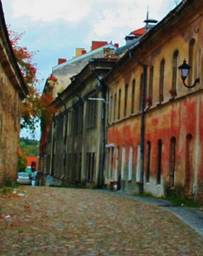
Vilnius' old city wall
– seen from outside
See: https://vilnews.com/?p=17006
We need more pictures bringing to us memories of Lithuania's past

Vytautas Sliupas, P.E.
Burlingame, California
__________________________

Irene Simanavicius
What a wonderful job you have.....:)
__________________________

Boris Bakunas
Fantastic colors! Great composition. I feel as if I'm walking the street already.
__________________________

Rimgaudas Vidziunas
great photos...thanks for posting!
- Bookmark :
- Digg
- del.icio.us
- Stumbleupon
- Redit it
- Posted by - (0) Comment

Lithuanian-made femtosecond lasers account for 80 % of the world market.
Lithuania, a leading light
in laser technology
The European Union's innovation scoreboard ranks Lithuania as a modest innovator, but there is one field in which this Baltic country of 3.2 million people shines, literally: lasers.
Half of all picosecond lasers sold worldwide are produced by Lithuanian companies, while Lithuanian-made femtosecond parametric light amplifiers, used in generating the ultrashort laser pulses, account for as much as 80 % of the world market.
Vilnius University and the Institute of Physics have been carrying out cutting-edge laser research since the 1970s, a decade or so after the first functioning laser was demonstrated. And today their work in the area is continuing apace — especially through collaboration in EU ICT projects.
Read more…
- Bookmark :
- Digg
- del.icio.us
- Stumbleupon
- Redit it
- Posted by - (0) Comment
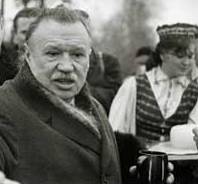
Lithuania’s postwar face of cruelty
Antanas Sniečkus, leader of Lithuania’s Communist Party for the period 1940-1974 sent tens of thousands of his own countrymen to inhuman suffering and death in Siberian labour camps.
See:
https://vilnews.com/?p=6598
https://vilnews.com/?p=16983

Evaldas Žvinys
Wikipedia has a very good description of A.Sniečkus. A. Štromas - who was raised by Sniečkus' family - provides a very good assessment of Sniečkus in his book "Laisvės Horizontai", and he puts it in a broader context in his "Totalitarianism and the Prospects for World Order: Closing the Door on the Twentieth Century". All in all - Sniečkus was quite brutal in suppressing the mass discontent after the Soviets took over, but he was the person who prevented the mass influx of Russian speaking population into Lithuania. Also, some argue that due to his policies Lithuania developed a network of medium-sized cities while limiting the growth of one or two biggest cities - which apparently makes Lithuania different from Latvia and Estonia.
Petras Griškevičius is a leader who in my mind fits the Brezhnev era well. Nothing was happening, and I think he just was rubber-stamping the orders from Moscow, no?
Now, A.M. Brazauskas had his own ideas about what is good for Lithuania - the Lithuanian Communist Party was the first party to seceed from the Communist Party of the Soviet Union. If that was not a big gamble for this Communist bureaucrat, I do not know what is - had the Soviet Union not fallen apart, this would have been an equivalent to a political suicide - with the loss of all privileges that come with it. He wanted to do a gradual transition to a market economy, and in my mind this is his greatest shortcoming. When doing it gradually, he allowed the former comrades and buddies to stay on top - and thus the old power structures were not fully taken apart. IMHO his political instinct and the ability to maneuver is unmatched to this day.
Tautietis
- Bookmark :
- Digg
- del.icio.us
- Stumbleupon
- Redit it
- Posted by - (0) Comment
Vilnius' old city wall
– seen from outside
Text and photos: Aage Myhre
The Vilnius city wall was a defensive wall built 500 years ago. Vilnius was by then capital of Europe's largest country, the Grand Duchy of Lithuania that stretched from the Baltic Sea to the Black Sea. The city wall was built between 1503 and 1522 for protection from the attacks by the Crimean Khanate at the beginning of the Muscovite–Lithuanian Wars. The stone and brick wall was a key element of the defensive system of Vilnius, and was paid for by the city's landowners. It contained nine gates and an artillery bastion.
Only a small part of the city wall remains today, and only one gate is still intact. The remaining part of the wall is very interesting, and you're hereby invited to a stroll along the wall outside....
- Bookmark :
- Digg
- del.icio.us
- Stumbleupon
- Redit it
- Posted by - (3) Comment

|
Vilnius' old city wall – seen from outside Text and photos: Aage Myhre The Vilnius city wall was a defensive wall built 500 years ago. Vilnius was by then capital of Europe's largest country, the Grand Duchy of Lithuania that stretched from the Baltic Sea to the Black Sea. The city wall was built between 1503 and 1522 for protection from the attacks by the Crimean Khanate at the beginning of the Muscovite–Lithuanian Wars. The stone and brick wall was a key element of the defensive system of Vilnius, and was paid for by the city's landowners. It contained nine gates and an artillery bastion. Only a small part of the city wall remains today, and only one gate is still intact. The remaining part of the wall is very interesting, and you're hereby invited to a stroll along the wall outside....
|
- Bookmark :
- Digg
- del.icio.us
- Stumbleupon
- Redit it
Let's introduce you to Antanas Šabaniauskas (1903–1987), considered to be the most sought-after artist of the little stage in interwar Lithuania. His intensive professional career lasted for six decades. Huge number of copies of his records was circulating throughout Lithuania. Šabaniauskas sang with Moishe Hofmekler’s orchestra and Alfonsas Mikulskis’ vocal male octet. He took part in musical programmes in Metropolis and Versalis restaurants, sang in the State Theatre Opera choir, appeared in minor tenor roles. His voice was also heard in radio broadcasts as well as in concerts around Lithuania. His success inspired Lithuanian composers Kajetonas Leipus, Emerikas and Stasys Gailevičiai, Juozas Bankas, N. Naikauskas, Juozas Pakalnis, Jurgis Karnavičius, Leonardas Lechavičius and Pranas Juodka to compose for the little stage. Šabaniauskas performed foreign schlagers almost exclusively in Lithuanian. He recorded 64 works (32 LPs) in London (Columbia) and Copenhagen (His Master’s Voice).
To read and listen more, go to
http://www.youtube.com/playlist?list=PLE91DEB0ECDE727FB
- Bookmark :
- Digg
- del.icio.us
- Stumbleupon
- Redit it
Let's introduce you to Antanas Šabaniauskas (1903–1987), considered to be the most sought-after artist of the little stage in interwar Lithuania. His intensive professional career lasted for six decades. Huge number of copies of his records was circulating throughout Lithuania. Šabaniauskas sang with Moishe Hofmekler’s orchestra and Alfonsas Mikulskis’ vocal male octet. He took part in musical programmes in Metropolis and Versalis restaurants, sang in the State Theatre Opera choir, appeared in minor tenor roles. His voice was also heard in radio broadcasts as well as in concerts around Lithuania. His success inspired Lithuanian composers Kajetonas Leipus, Emerikas and Stasys Gailevičiai, Juozas Bankas, N. Naikauskas, Juozas Pakalnis, Jurgis Karnavičius, Leonardas Lechavičius and Pranas Juodka to compose for the little stage. Šabaniauskas performed foreign schlagers almost exclusively in Lithuanian. He recorded 64 works (32 LPs) in London (Columbia) and Copenhagen (His Master’s Voice).
To read and listen more, go to
http://www.youtube.com/playlist?list=PLE91DEB0ECDE727FB
- Bookmark :
- Digg
- del.icio.us
- Stumbleupon
- Redit it
- Posted by - (0) Comment

Lithuania seeks to import gas from Israel
VILNIUS - Lithuanian Minister of Economy Minister Rimantas Zylius says his country plans to import gas from Israel starting in 2014.
"We have already ordered tankers and are building a port for this purpose. This way, we'll be able to end Russian Gazprom's monopoly on gas supplies to Lithuania. We are just waiting for Israel to start exporting gas already," Zylius told the Yedioth Ahronoth daily.
According to the minister, "Lithuania longs to do business with Israel. We admire the State of Israel for being one of the world's most advanced startup countries and a leader in life sciences. The Teva facility opened in Lithuania is an example for all factories in the country."
Last week, the Lithuanian capital of Vilnius hosted the Life Sciences Baltic conference, which was attended by representatives from dozens of countries. The Israeli delegation, which included 120 businesspeople and scientists, was the biggest of all.
Read more…
- Bookmark :
- Digg
- del.icio.us
- Stumbleupon
- Redit it
- Posted by - (1) Comment
They’re dead but they
won’t lie down
LEADERS, COMMUNIST PARTY OF SOVIET UNION

LEADERS, COMMUNIST PARTY OF LITHUANIA
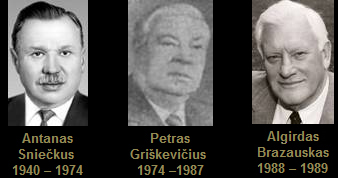
Important parliamentary elections are soon due in Lithuania. The party which leads in the polls had its origins in the Lithuanian Communist Party 20 years ago, and many believe that the nomenclature from those days still is very much alive in this party as well as in other parties of today. That modern, democratic governance is still not implemented and practiced. That corruption and personal gain is more important than the Lithuanian people's best. We hereby invite you to debate. Is the Lithuania nomenclature still alive?
To read more, go to SECTION 5
- Bookmark :
- Digg
- del.icio.us
- Stumbleupon
- Redit it
- Posted by - (1) Comment
They’re dead but they won’t lie down
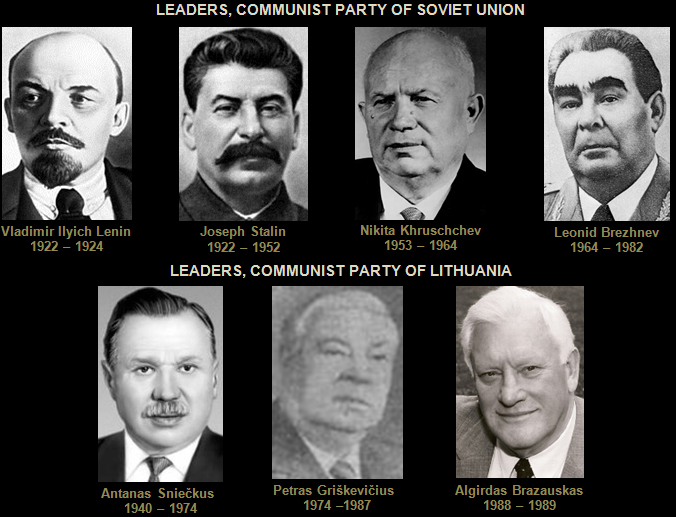
Important parliamentary elections are soon due in Lithuania. The party which leads in the polls had its origins in the Lithuanian Communist Party 20 years ago, and many believe that the nomenclature from those days still is very much alive in this party as well as in other parties of today. That modern, democratic governance is still not implemented and practiced. That corruption and personal gain is more important than the Lithuanian people's best. We hereby invite you to debate. Is the Lithuania nomenclature still alive?
- Bookmark :
- Digg
- del.icio.us
- Stumbleupon
- Redit it
- Posted by - (0) Comment
Lingering nomenklatura
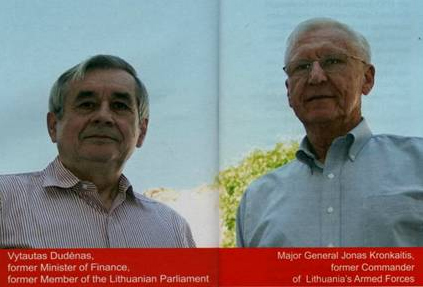
Major General Jonas Kronkaitis was Lithuania’s Vice Minister of National
Defense and Commander of the country’s armed forces for the period 1999 –
2004. Vytautas Dudenas was a member of the Lithuanian Parliament in the
1990s and later Minister of Finance for the period 1999 – 2000.
Both are now retired.
“Many of our Lithuanian politicians, civil servants, judges, the court system and the prosecutor’s office are still the children of the old Soviet ‘nomenklatura’, and there is a great need for fresh blood and new thinking in order for Lithuania to catch up with Western Europe.”
This said Jonas Kronkaitis and Vytautas Dudenas in 2006. Are they right, also in 2012?
To read more, go to SECTION 5
- Bookmark :
- Digg
- del.icio.us
- Stumbleupon
- Redit it
VilNews e-magazine is published in Vilnius, Lithuania. Editor-in-Chief: Mr. Aage Myhre. Inquires to the editors: editor@VilNews.com.
Code of Ethics: See Section 2 – about VilNews. VilNews is not responsible for content on external links/web pages.
HOW TO ADVERTISE IN VILNEWS.
All content is copyrighted © 2011. UAB ‘VilNews’.

 Click on the buttons to open and read each of VilNews' 18 sub-sections
Click on the buttons to open and read each of VilNews' 18 sub-sections 































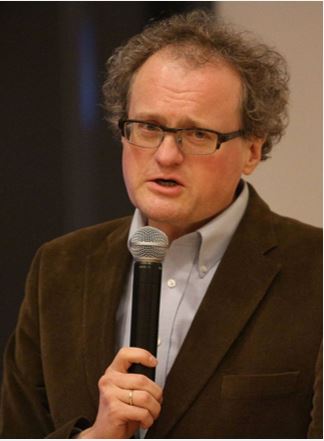
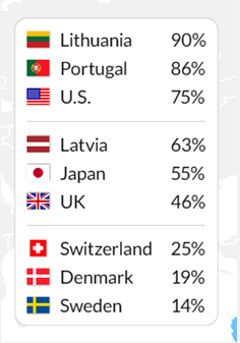
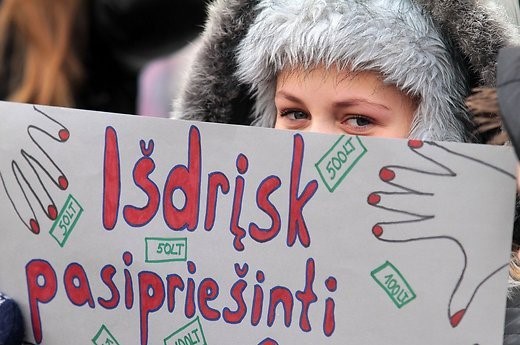


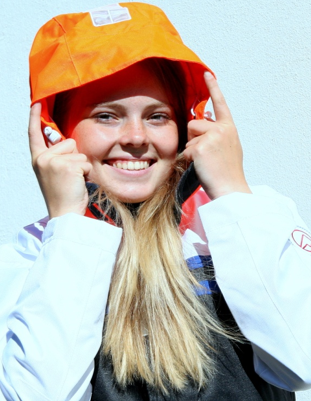
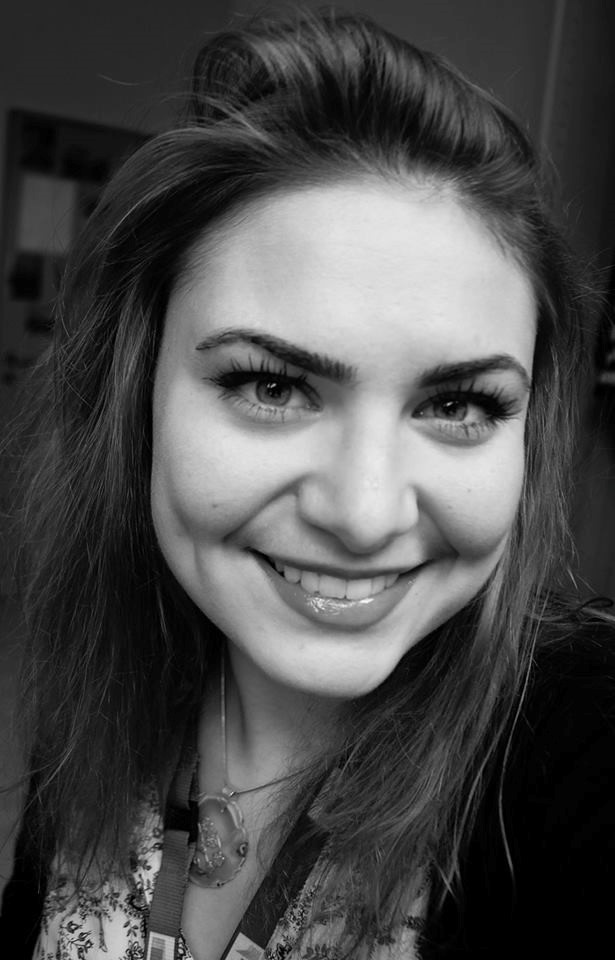
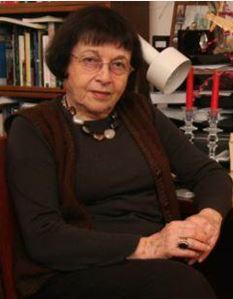
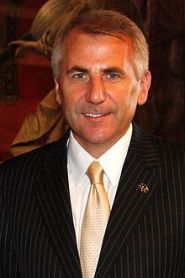
.jpg)
